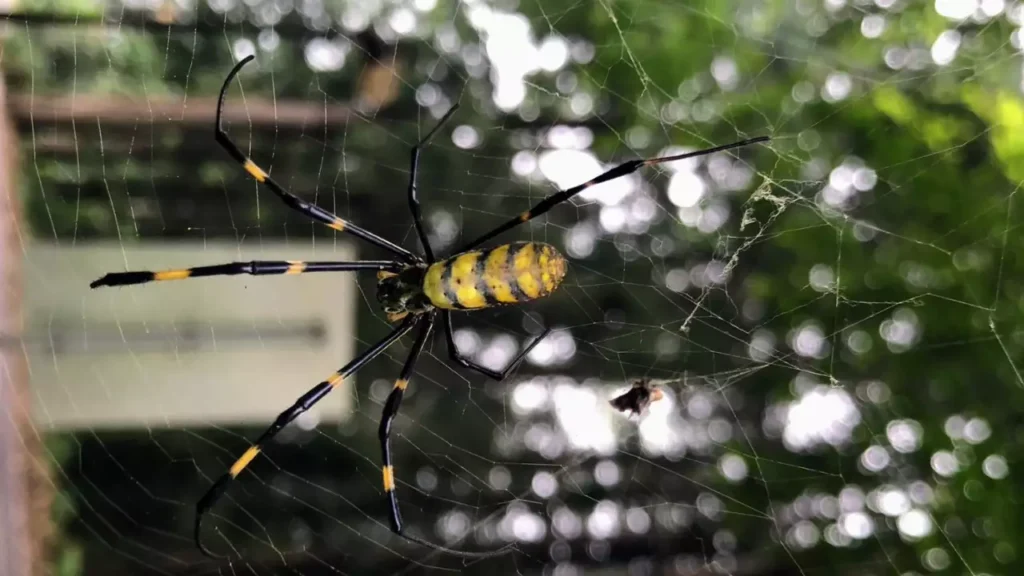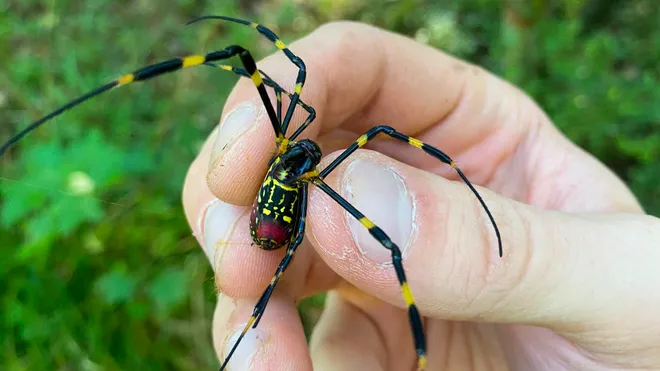
What Are Joro Spiders And Are They Poisonous: Have you heard about Joro spiders? These fascinating creatures have been making headlines lately. Today, we’ll delve into what Joro spiders are, whether they’re poisonous, and everything else you need to know about these “flying” arachnids. In recent days, there’s been a buzz about a fascinating arachnid known as the Joro spider.
These creatures have caught the attention of many due to their unique ability to glide through the air, almost like tiny aerial acrobats. But what exactly are Joro spiders, and should we be concerned about their presence? Let’s dive into the world of these intriguing creatures to learn more.
What Are Joro Spiders?
Joro spiders, scientifically known as Trichonephila clavata, are a species of orb-weaver spider native to East Asia, particularly Japan. They are also commonly referred to as Japanese Joro spiders or Jorō-gumo in Japanese folklore. These spiders are known for their large size and striking appearance, making them a subject of curiosity and intrigue.
Physical Characteristics:
One of the most remarkable features of Joro spiders is their size. They can measure up to several inches in length, with females being larger than males. Their bodies are typically adorned with vibrant colors, including shades of yellow, orange, and black. Additionally, Joro spiders possess distinctive patterns on their abdomens, which contribute to their aesthetic appeal.
The ‘Flying’ Phenomenon:

One of the most intriguing aspects of Joro spiders is their ability to seemingly “fly.” While they don’t possess wings like birds or insects, these spiders are adept at using silk threads to catch the wind and travel over long distances. This behavior, known as ballooning or kiting, allows Joro spiders to disperse to new areas and establish colonies.
Habitat and Distribution:
Joro spiders are primarily found in forested areas, where they build their characteristic orb-shaped webs among trees and bushes. However, their ability to balloon enables them to spread to a variety of environments, including urban areas. In recent years, sightings of Joro spiders have been reported in regions outside of their native range, raising concerns about their potential impact on local ecosystems.
Are Joro Spiders Poisonous?
One of the most common questions about Joro spiders is whether they are poisonous to humans. Like most spiders, Joro spiders possess venom, which they use to immobilize their prey. However, their venom is not considered harmful to humans. While a bite from a Joro spider may cause some discomfort, it is unlikely to result in serious medical complications. Nevertheless, it’s important to exercise caution and avoid handling these spiders.
Ecological Role:
Despite their intimidating appearance, Joro spiders play a vital role in maintaining ecological balance. As predators, they help control insect populations, including pests that can damage crops and gardens. By keeping populations of insects in check, Joro spiders contribute to the health of ecosystems and provide a natural form of pest control.
Conservation Status:
While Joro spiders are not currently listed as endangered or threatened, their expanding range and potential impact on native species warrant monitoring. In regions where they have been introduced outside of their native range, efforts may be needed to manage their populations and mitigate any adverse effects on local ecosystems.
What Are Joro Spiders And Are They Poisonous? All About ‘Flying’ Arachnid